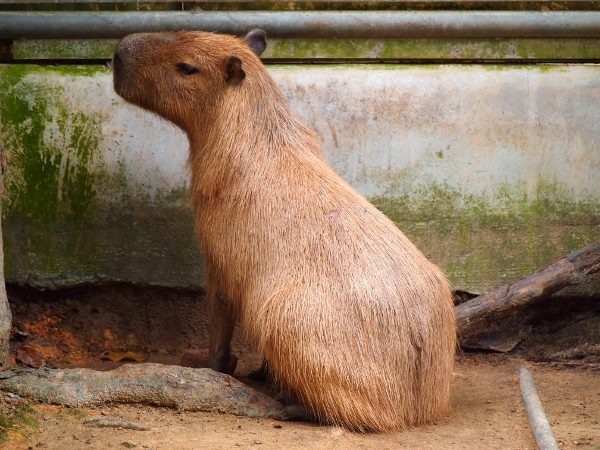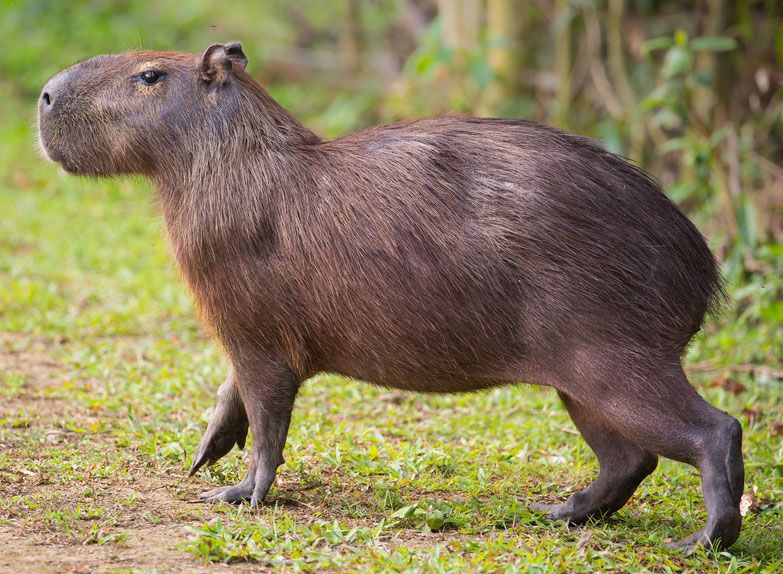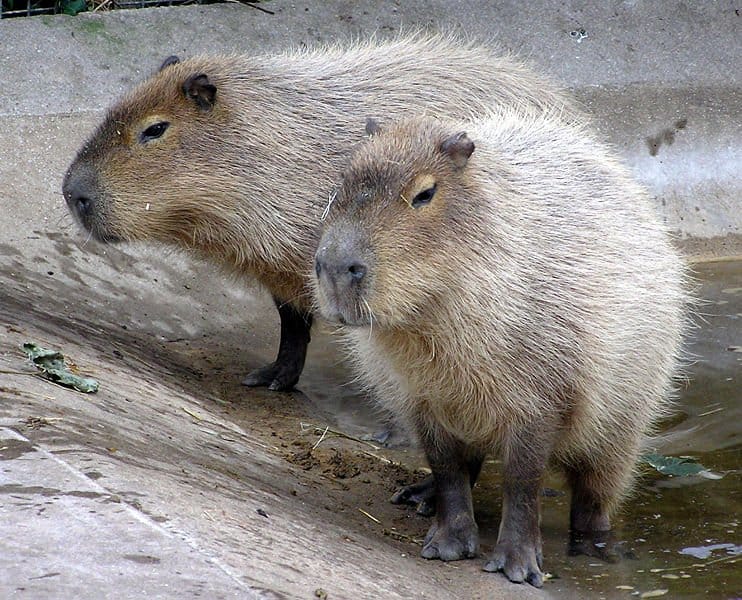Have you ever wondered what the scientific name of the capybara is? Well, look no further, because it is none other than Hydrochoerus hydrochaeris. This charming and friendly creature, known for its large size and semi-aquatic lifestyle, has a scientific name as unique and fascinating as its appearance. In this article, we will explore the origins and significance of the scientific name Hydrochoerus hydrochaeris, shedding light on the captivating world of the capybara and its scientific classification. So, get ready to embark on a journey of discovery and learn more about this remarkable creature!
Overview
The capybara, scientifically known as Hydrochoerus hydrochaeris, is a fascinating creature that captures the curiosity and admiration of many. It is the largest rodent species in the world, belonging to the Hydrochoeridae family. With its unique physical characteristics, intriguing behaviors, and important role in ecosystems, the capybara is truly an incredible animal worthy of exploration.
Taxonomy
In terms of taxonomy, the capybara falls under the scientific classification of:
- Kingdom: Animalia
- Phylum: Chordata
- Class: Mammalia
- Order: Rodentia
- Family: Hydrochoeridae
- Genus: Hydrochoerus
- Species: hydrochaeris
Etymology
The name “capybara” derives from the indigenous Tupi language, spoken by the Tupi people of Brazil. It translates to “master of the grasses” or “grass eater,” reflecting the capybara’s herbivorous diet. The scientific name, Hydrochoerus hydrochaeris, is a combination of the Greek word “hydor” meaning water, “choiros” meaning pig, and the Latin word “capra” meaning goat. These names allude to the capybara’s semiaquatic lifestyle resembling that of a pig or goat.
Physical Description
Size
Capybaras are impressive in size, measuring around 1.2 to 1.5 meters (4 to 5 feet) in length and weighing 35 to 66 kilograms (77 to 146 pounds). They have a sturdy, barrel-shaped body and long, stout limbs. Despite their size, capybaras are surprisingly agile in both land and water, making them unique among rodents.
Appearance
Capybaras have a striking appearance characterized by short, coarse fur that can vary in color from reddish-brown to dark brown or even gray. Their bodies are covered in stiff guard hairs, which provide protection and help keep their skin dry when submerged in water. These captivating creatures have small ears and eyes positioned high on their heads, allowing them to stay alert to potential threats while grazing or swimming.
Adaptations
The capybara’s body is marvelously adapted to its semiaquatic lifestyle. Their eyes, ears, and nostrils are strategically positioned on the top of their head, enabling them to keep an eye out for predators while the rest of their body remains submerged underwater. Additionally, capybaras possess partially webbed feet, which aid in swimming and navigating through aquatic environments with ease.

Habitat
Geographical Range
Capybaras are primarily found in South America and can be observed throughout a wide range of countries, including Brazil, Venezuela, Colombia, Argentina, and Uruguay. They thrive in various types of habitats, from rainforests and grasslands to marshes and wetlands.
Preferred Environment
Capybaras are particularly fond of areas with an abundant water supply, as they are semiaquatic creatures. They are often spotted near rivers, ponds, or marshy areas, where they can swim and bask in the sun. Lush vegetation plays a crucial role in their preferred environments, as it provides them with both shelter and food.
Diet
As herbivores, capybaras primarily feed on an assortment of plant matter. They have a preference for aquatic plants, grasses, and reeds, but will also consume a variety of fruits and tree bark. Their ability to graze on both land and water makes them essential for shaping and maintaining ecosystems, as they contribute to seed dispersal and help control vegetation growth.
Behavior
Social Structure
Capybaras are incredibly social animals, forming large groups called herds or troops. These groups can consist of up to 10 to 20 individuals, with one dominant male leading the herd. Within the group, there is a complex social hierarchy, and various individuals take on specific roles and responsibilities. The cohesion and cooperation within the herd enable capybaras to navigate their environment more effectively and protect themselves from potential threats.
Communication
Capybaras utilize a range of vocalizations, body movements, and scent marking to communicate with each other. They emit calls such as purrs, grunts, whistles, and barks to convey different messages, such as warning signals or courtship calls. In addition, scent marking through urine and feces helps mark territory and maintain social bonds within the group.
Reproduction
The breeding season for capybaras typically occurs during the rainy season when resources are abundant. Females have a gestation period of around 130 to 150 days, after which they give birth to a litter of 2 to 8 well-developed offspring known as pups. These young capybaras are remarkably independent from birth and can join their herd within a few hours. They are weaned and start grazing on vegetation alongside their mother after about three months.

Predators and Threats
Natural Predators
Although capybaras are large and formidable, they have a number of natural predators. Jaguars, anacondas, caimans, and large birds of prey are among the few that pose a threat to capybaras. These predators target the young, the weak, or those that become isolated from their protective herd.
Human Interaction
Capybaras have had a long history of interaction with humans. In some regions, they are hunted for their meat, hide, or fat, which is used for various purposes. Additionally, capybaras are often targeted as agricultural pests due to their grazing habits, as they can damage crops or infrastructure when searching for food or water.
Conservation Status
Currently, the capybara is not considered a species of concern in terms of conservation status. Its large population size and broad distribution contribute to its resilience. However, habitat loss, hunting, and conflicts with human activities can still pose threats to local populations. Continued monitoring and conservation efforts are essential to ensure the long-term survival and well-being of these enchanting creatures.
Interactions with Humans
Domestication
While capybaras have not been domestically bred on a large scale, they have gained popularity as unconventional pets in certain parts of the world. Due to their social nature, they can form close bonds with humans and other animals if raised and handled appropriately. However, it’s crucial to note that owning a capybara requires specific knowledge, resources, and dedication to meet their complex needs.
Cultural Importance
In several cultures throughout South America, capybaras hold cultural significance. For example, in some indigenous communities, they are seen as spirit animals associated with communal harmony, adaptability, and insight. Their presence in folklore, traditional ceremonies, and artwork reflects their enduring importance in local traditions.
Ecotourism
Capybaras have become a notable attraction for ecotourists in regions where they can be observed in their natural habitat. These charismatic creatures captivate visitors with their unique appearance and intriguing behaviors. Responsible ecotourism provides an opportunity for people to appreciate and learn about capybaras while supporting conservation efforts and raising awareness about the importance of protecting their ecosystems.

Popular Culture
Capybara as Pets
Social media platforms have played a significant role in popularizing the idea of capybaras as pets. Their adorable and friendly demeanor, coupled with their unusual appearance, has made them internet sensations. However, it’s important to recognize that owning a capybara is not suitable for everyone and entails important responsibilities, including providing appropriate enclosures, diet, and companionship.
Capybara in Art and Media
Capybaras have made their way into various forms of art and media. Their unique appearance and intriguing behaviors have inspired numerous illustrations, paintings, sculptures, and animations. They have also been featured in books, films, video games, and even as mascots for events or organizations.
Symbolism
Capybaras often symbolize traits such as peace, harmony, adaptability, and social connection. Their ability to live peacefully in social groups and adapt to different environments has made them a symbol of unity and coexistence. In some cultures, they are considered a representation of tranquility and communal prosperity.
Research and Study
Scientific Research
Scientists have been drawn to the captivating nature of capybaras, leading to extensive scientific research on various aspects of their biology and ecology. Studies have focused on their habitat preferences, feeding behaviors, reproductive strategies, and interactions with other species. Understanding capybaras’ biology and ecological roles provides valuable insights into the functioning and conservation of ecosystems.
Ecological Studies
Capybaras play a vital role in shaping their environments. With their grazing habits, they help control vegetation growth, prevent forest encroachment into grasslands, and promote plant diversity. Ecological studies have shown that their presence can have cascading effects on other species, affecting the abundance and distribution of both flora and fauna in a given ecosystem.
Behavioral Studies
Behavioral studies on capybaras have provided fascinating insights into their social dynamics, communication methods, and cognitive abilities. Observations have revealed the complexity of their social structure, the variety of vocalizations they use, and their problem-solving skills. These studies showcase the intelligence and adaptability of capybaras, enhancing our understanding of the animal kingdom as a whole.

Interesting Facts
Largest Rodent Species
Capybaras take the title of the largest rodent species in the world. They surpass even their close relative, the beaver, in terms of size and weight. This distinction makes them all the more remarkable, as they stand out among their rodent counterparts.
Semiaquatic Lifestyle
Capybaras excel in both terrestrial and aquatic environments, leading a semiaquatic lifestyle. Their unique adaptation of webbed feet and efficient swimming abilities enable them to navigate through water with remarkable ease. This lifestyle allows them to access various food sources and escape from potential predators.
Grazing Habits
With their herbivorous diet, capybaras are considered grazing animals. They spend a significant portion of their time grazing on vegetation, which not only sustains them but also helps maintain the balance of their habitats. The continual grazing of capybaras prevents vegetation overgrowth and aids in seed dispersal, contributing to ecosystem health.
Conclusion
In conclusion, the capybara, scientifically known as Hydrochoerus hydrochaeris, stands out as an extraordinary creature. From its impressive size and unique physical adaptations to its intricate social structures and vital ecological role, the capybara is a testament to the wonders of the animal kingdom. Through continued research, conservation efforts, and responsible interactions with humans, we can ensure the preservation and appreciation of these remarkable creatures for future generations. So, next time you encounter a capybara, take a moment to admire its fascinating attributes and celebrate the captivating world of this master of the grasses.




